Editor’s Note: This post is written by a member of LTV’s sponsored content team, The Leisure Explorers. Do you own a Leisure Travel Van and enjoy writing? Learn more about joining the team.
“The question is not what you look at but what you see” Henry David Thoreau (1817-1862)
At first, we planned to write two articles about 22 Central Texas State Parks. However, during our trip to New Mexico and Arizona in Part One and Part Two of this series, we decided to return to Canada through Texas. This detour allowed us to visit eight more parks, and in this story, we’ll share our experiences in those parks.
Monahans Sandhills State Park
Our first stop back in Texas was Monahans Sandhills State Park which has a very good visitor center describing the history of the park and the surrounding area. There is a very short walking trail through a native plant garden where spring blooms have begun. Our campsite was right beside the dunes and had a covered shelter which was very welcome with the high temperatures. We tried sliding down the dunes like we had done at White Sands National Park in New Mexico, but the sand here was extremely fine, so we just sunk in. However, we enjoyed the physicality of freely hiking through the dune area.
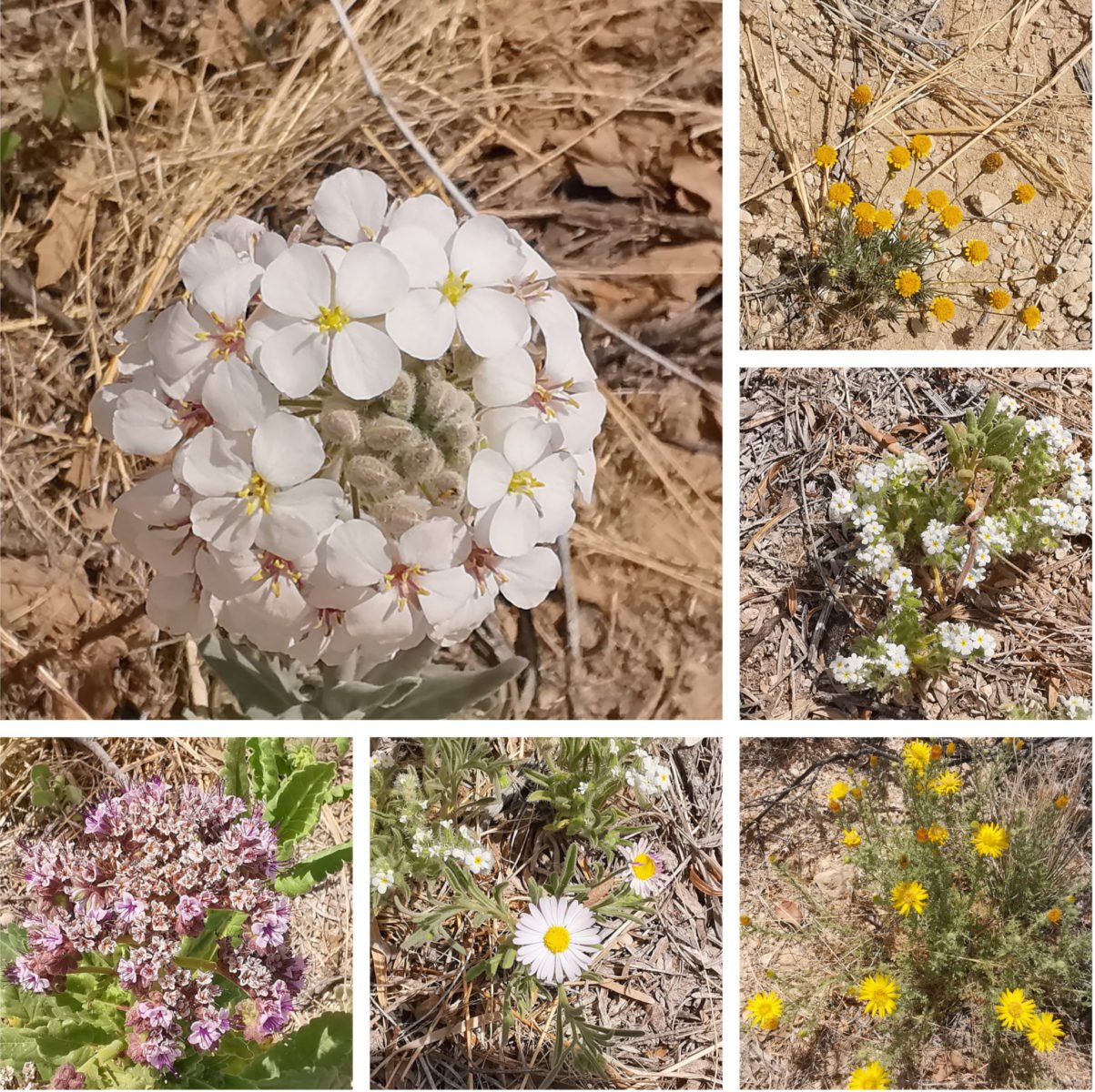
Lake Colorado State Park
The following morning the winds were forecast to pick up significantly, so we attempted to leave early enough to avoid them, but it didn’t work. We got caught in very bad winds, with dust blowing across the Interstate as we headed east to Lake Colorado City State Park. The scary handling of our Unity in high winds has now prompted us to book our suspension upgrades to be done this summer!
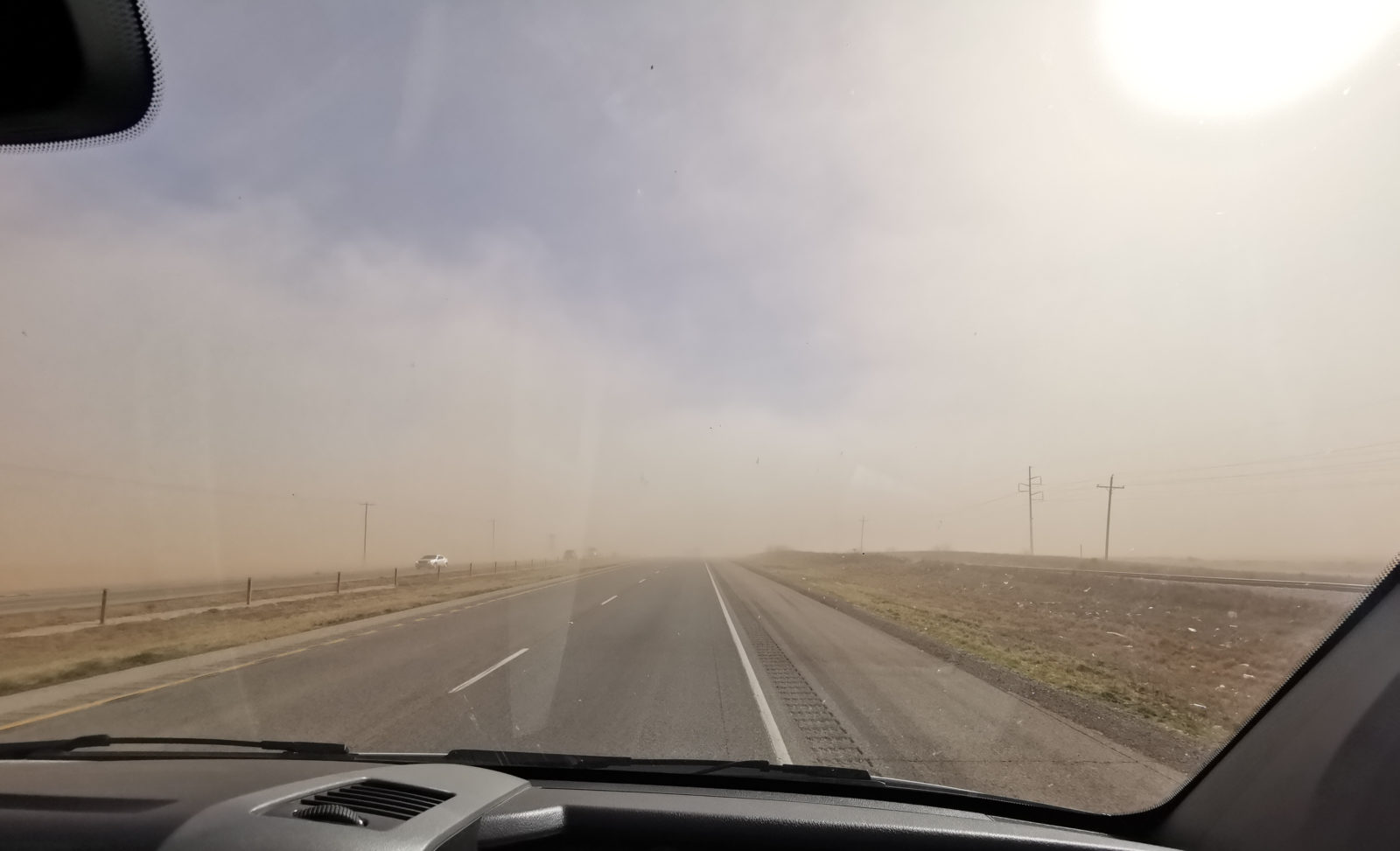
This park has a large man-made lake which is good for fishing. There are also a couple of hiking trails, so we did the Cactus Trail for 5 kilometers along the lake. There were unique rock formations and some Lace Hedgehog Cactus blooming.
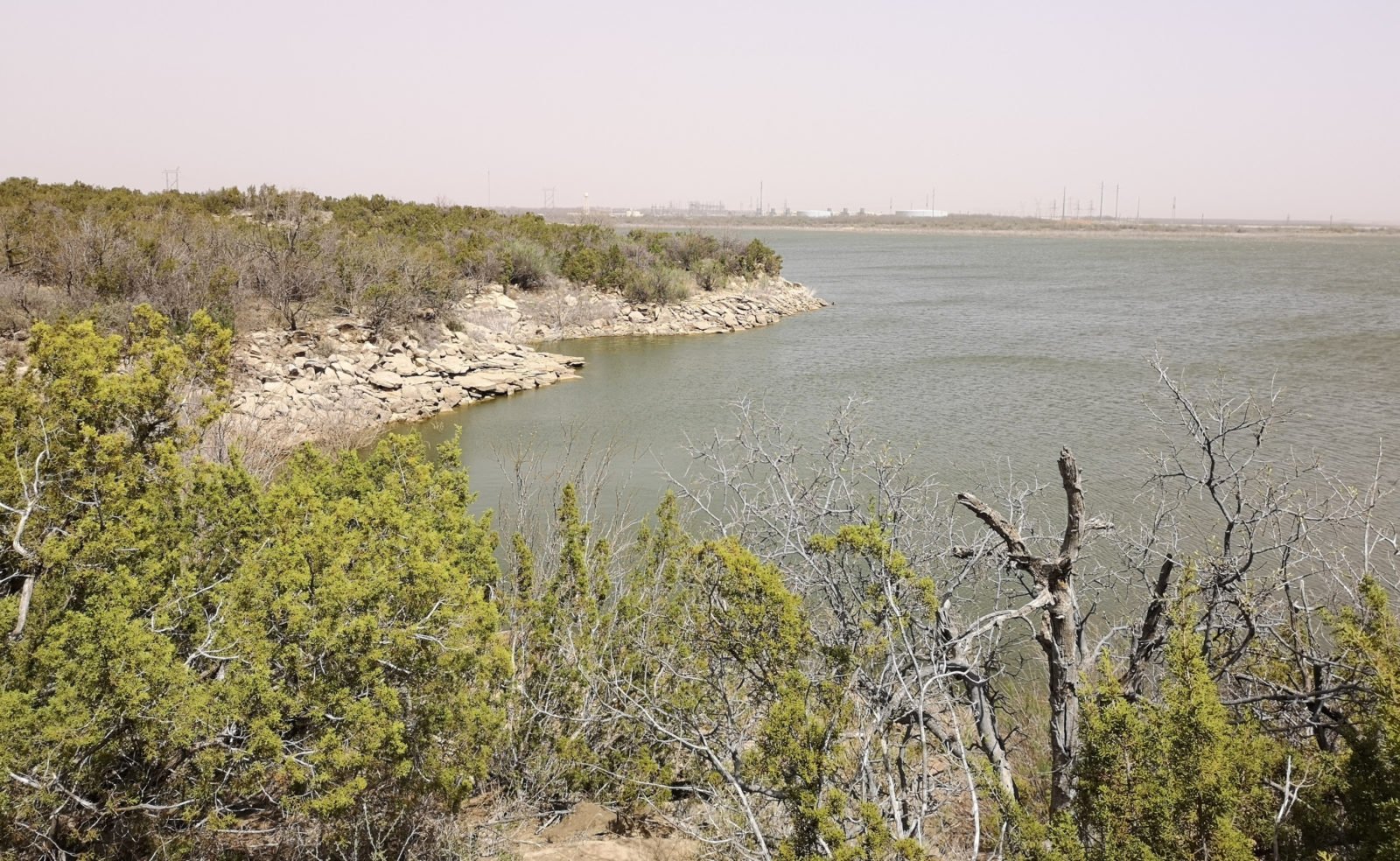
Abilene State Park
As we left the park the next day to head to Abilene State Park, we were amazed by the number of wind turbines, and it turned out that this area had the largest number of wind turbines in Texas. The state of Texas is the largest wind power producer in the United States and ranks fifth globally.
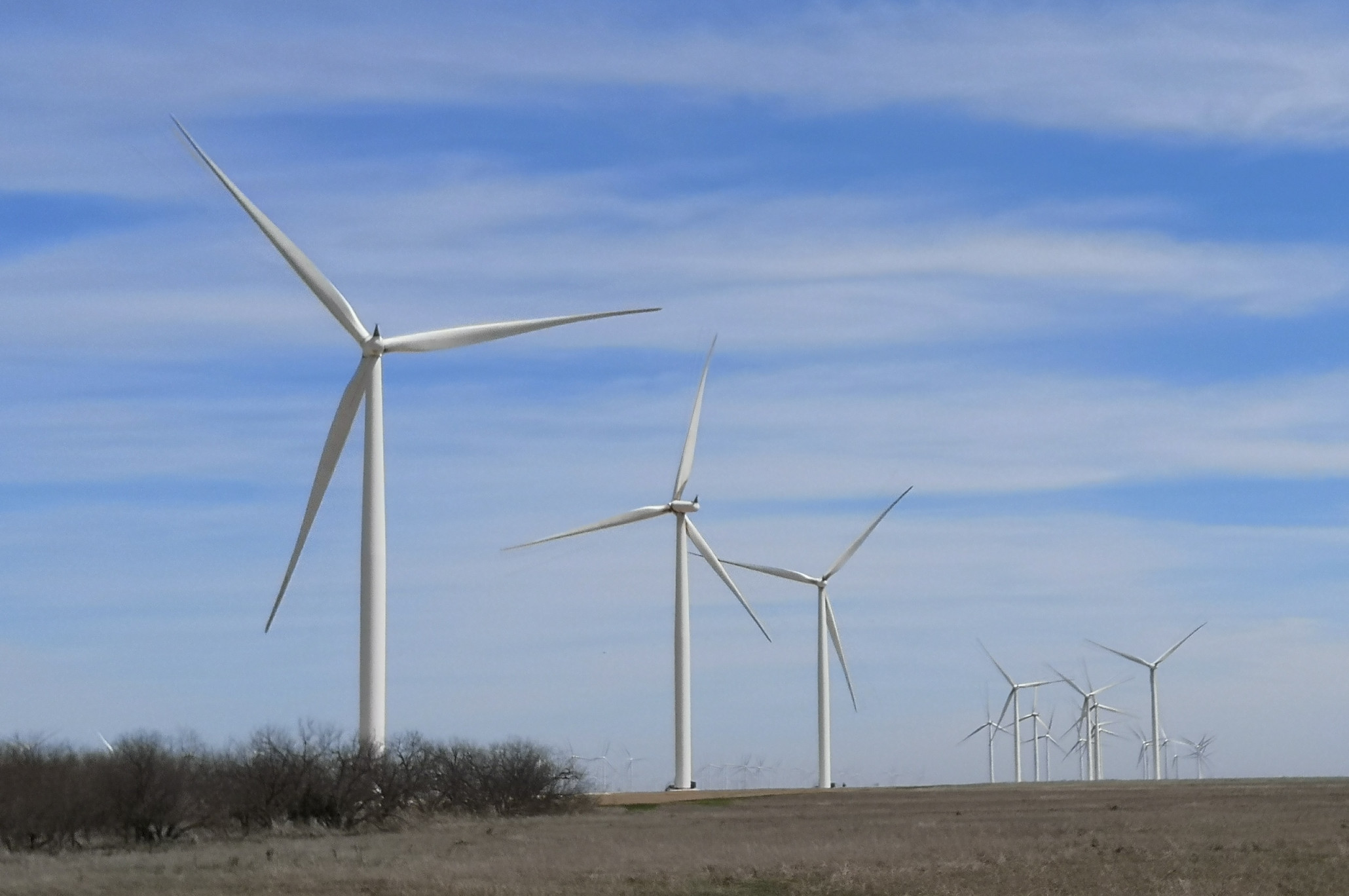
We arrived at Abilene on a Saturday, and it was extremely busy as many of the Texas State Parks are on the weekends. We walked along the Elm Creek and Eagle trails to see the CCC structures in the park.
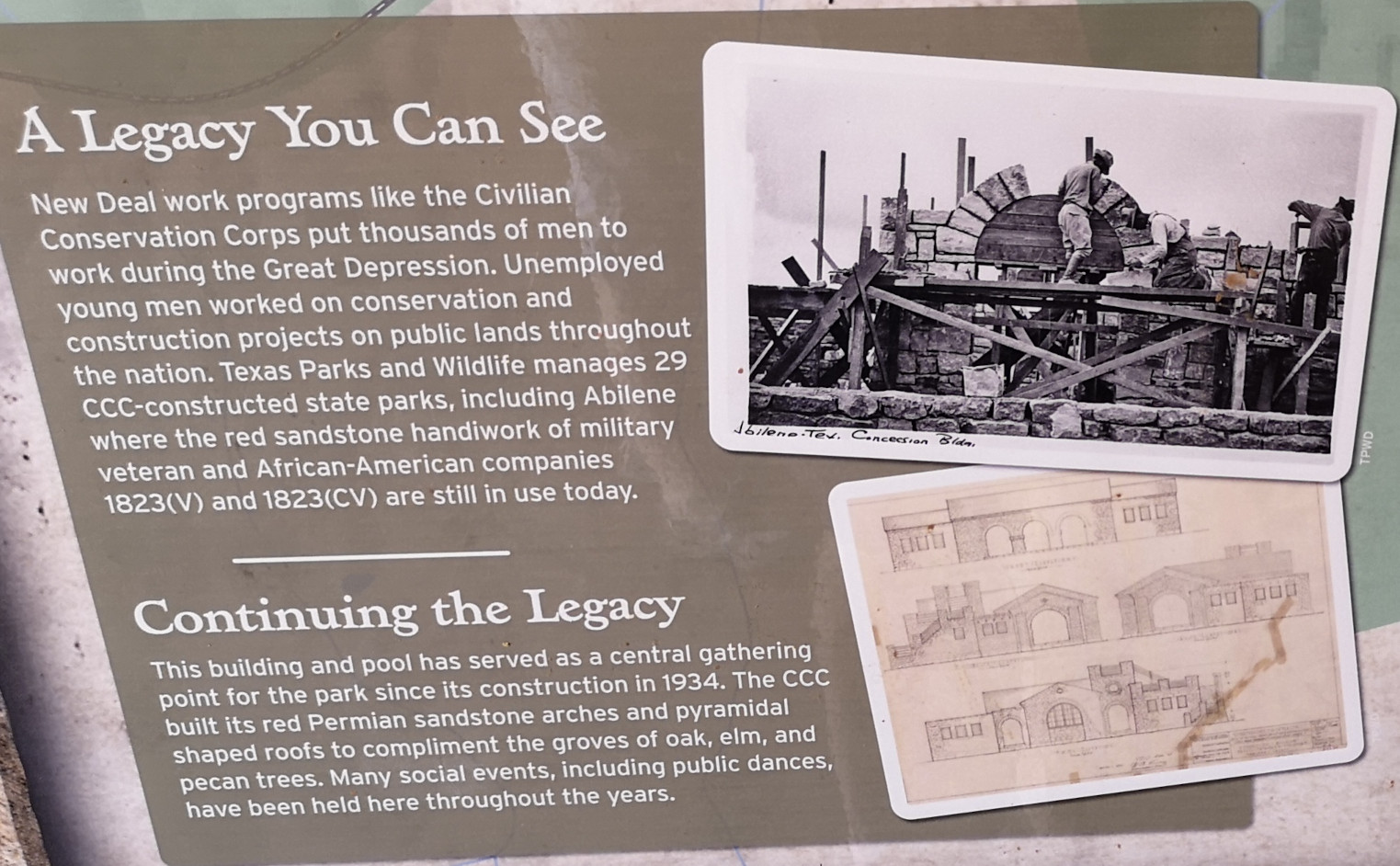

There is a 5800-gallon swimming pool, which wasn’t open for the season yet, and a large water tower by the pool.
On Sunday, the park completely emptied out, and we did a mountain bike ride on the dam and north trails. Unfortunately, Sharon ran over a very large thorn and got her third flat tire of this trip. Naturally, it occurred halfway through the trail, so we had to walk her bike back to the campground. We carry spare tubes in the RV, so I swapped the tube, and we did an additional ride around the campground to see the other camping sections and the bird blind.
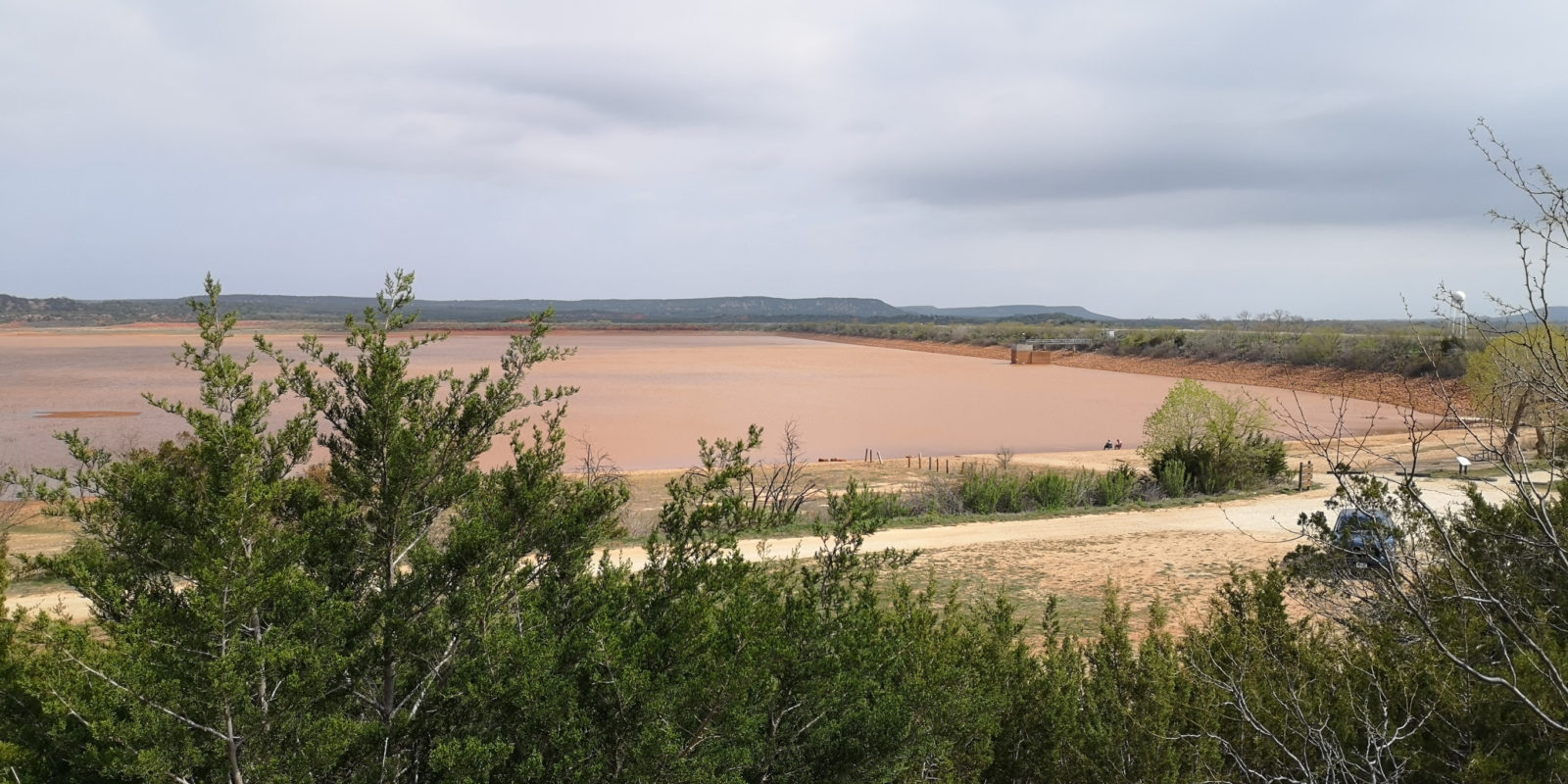
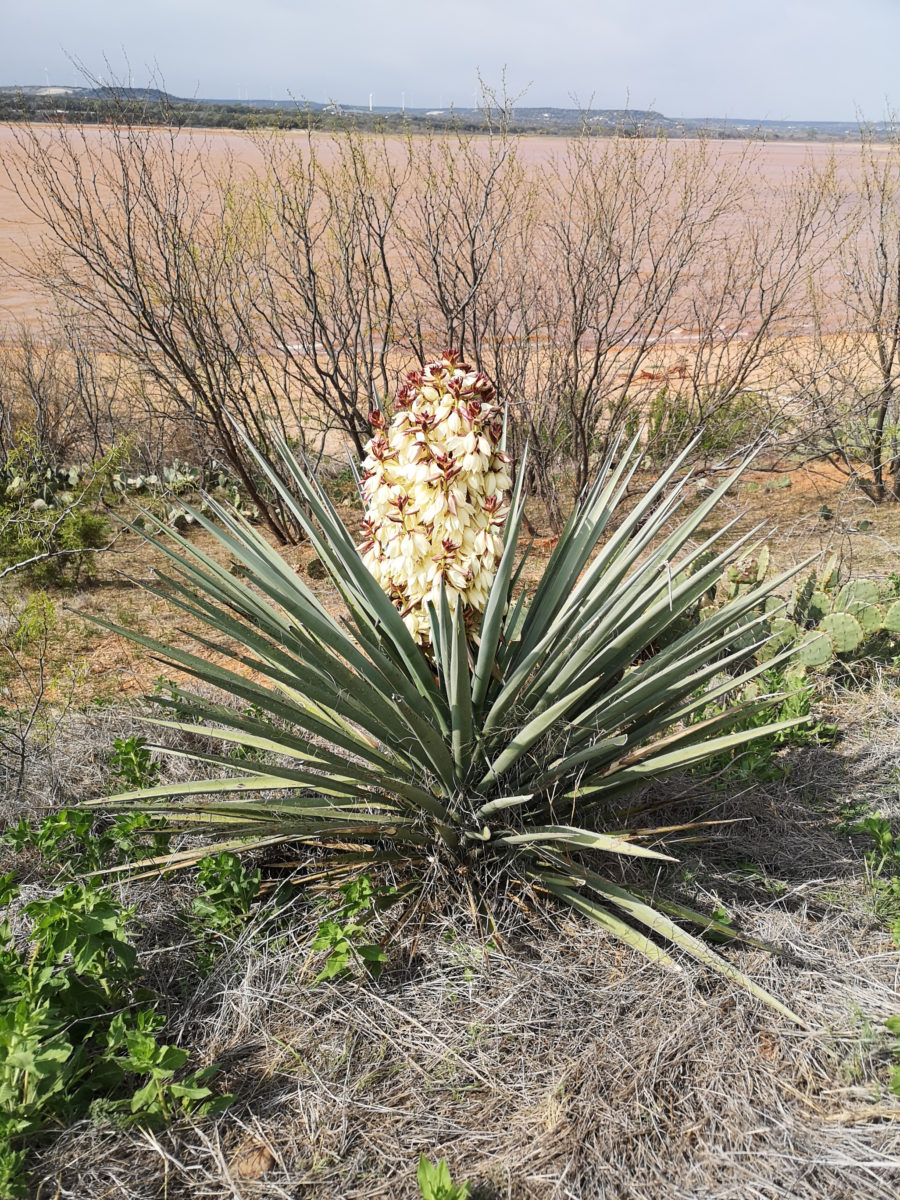
Dinosaur Valley State Park
After two nights at Abilene, we drove to Dinosaur Valley State Park, it deserves a multiple-day stay. The dinosaur tracks in the park are incredibly cool to see! There are 2 types of tracks you can see in this park along the Paluxy River, the Acrocanthosaurus and Sauroposeidon tracks. They were discovered in the 1930’s and some were excavated in the 1940’s.
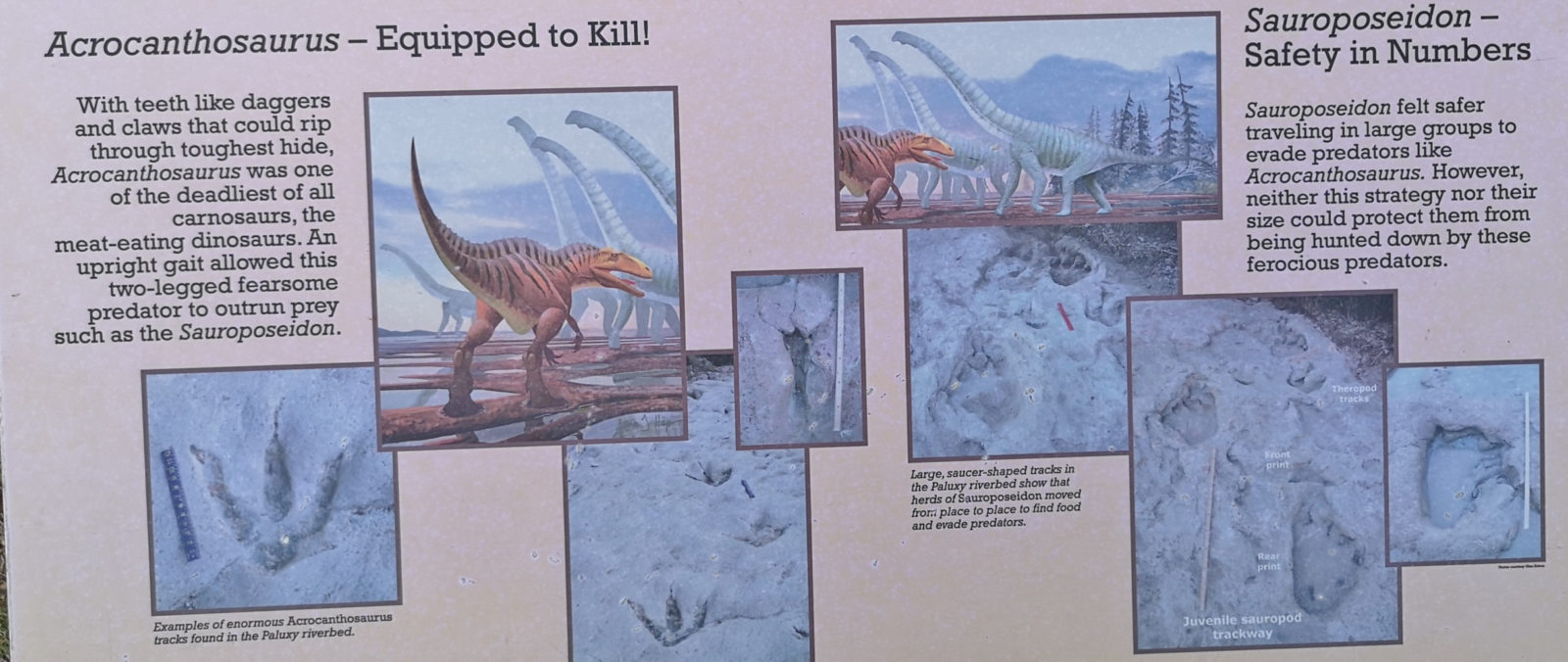
We first checked out the Blue Hole site, but the water level was too high to see the tracks there, so we went to the Ballroom site, where we waded into the water to see the three toed Acrocanthosaurus tracks. Later in the afternoon, we went to the main site, where a pool had both tracks, although the Sauroposeidon ones were harder to distinguish.
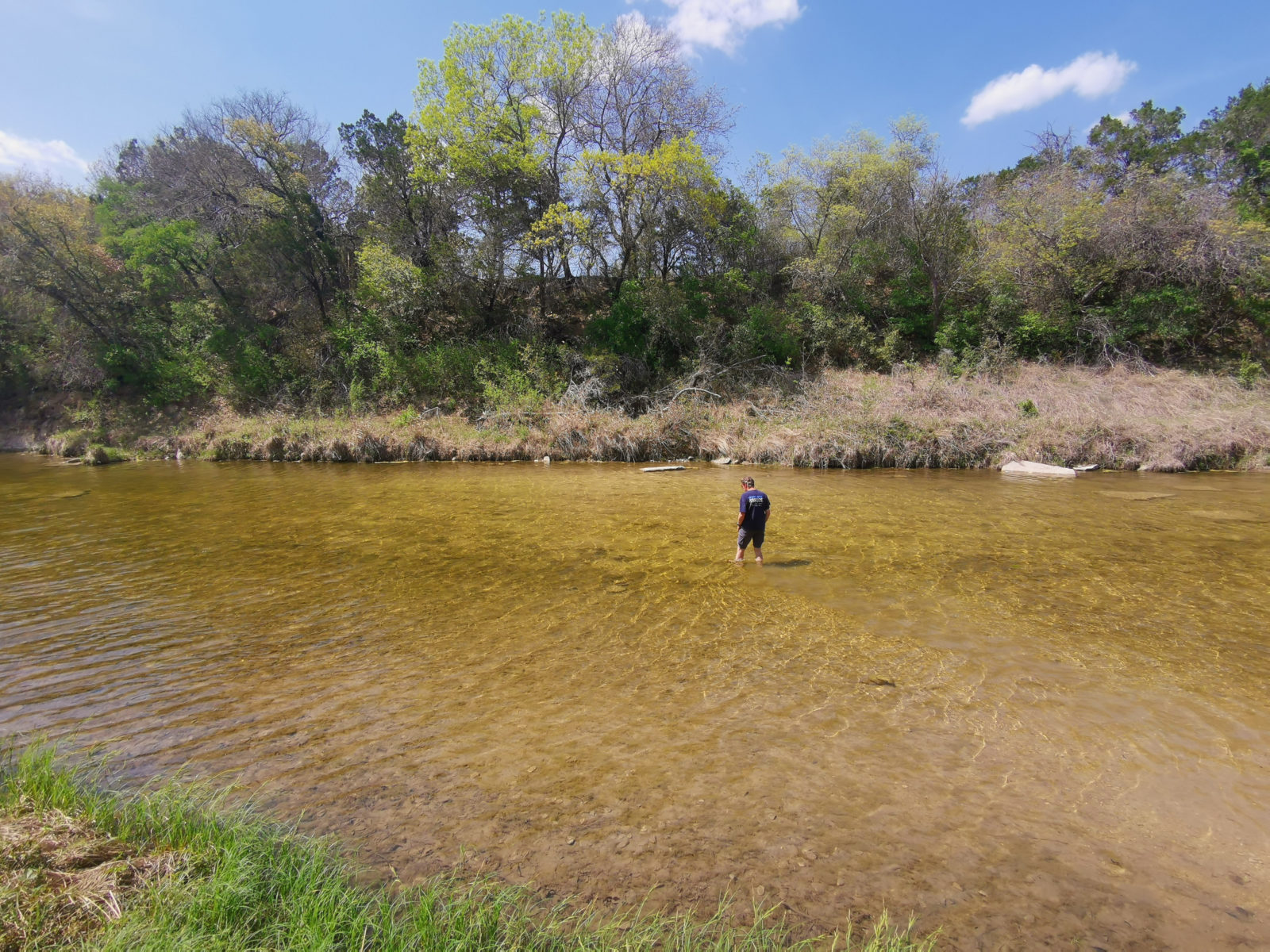
The next day we decided to do a long hiking loop (13 kilometers) covering Denio Creek, Cedar Break, Black-Capped Vireo, Overlook, Limestone Ledge, and the Paluxy River trails. The Denio Creek trail was fascinating with the geology along the creek.
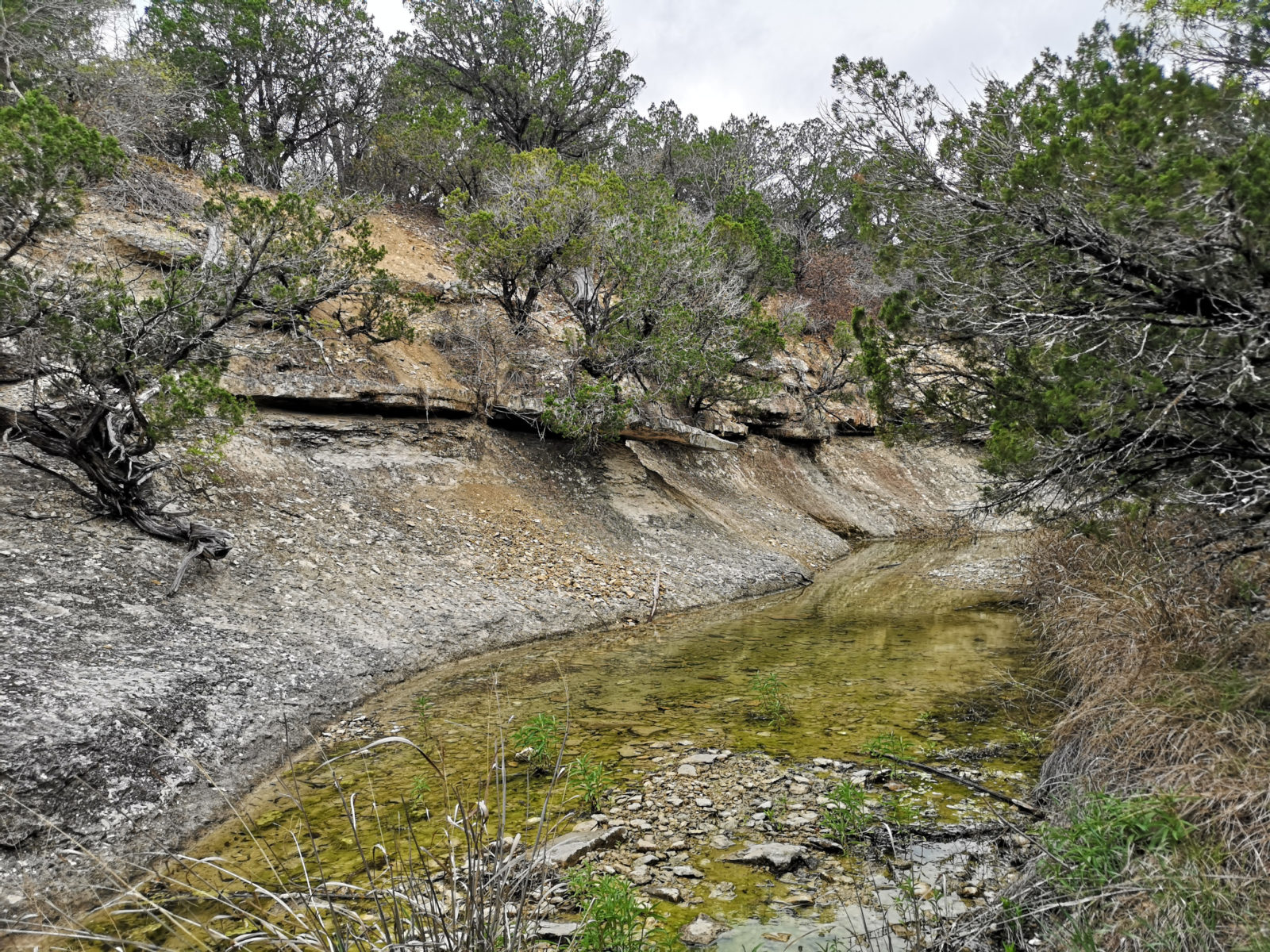
Black-Capped Vireo was more of a forest walk with nice spring-blooming flowers. The Overlook was high up but didn’t have the best view of the Paluxy River. We could only do part of the Limestone Ledge trail as they had a section of the loop closed for habitat restoration.
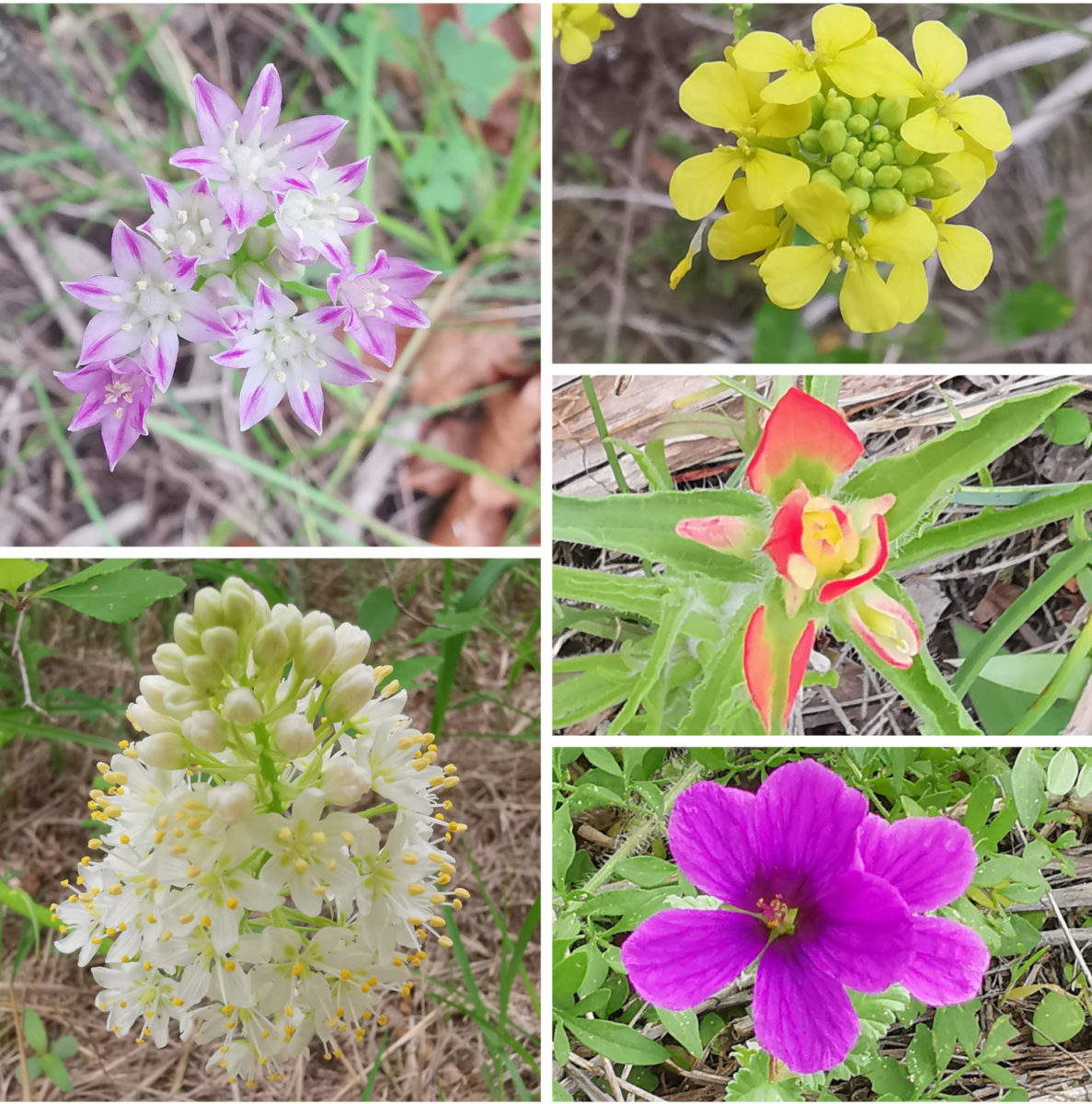

We returned to the main site river crossing and then followed the Paluxy River trail. This turned out to be our most spectacular find! Further along the river’s edge, the map showed there were some more dinosaur tracks to see. Well, these ones were not underwater, so we got the best view of any of the tracks we had seen!

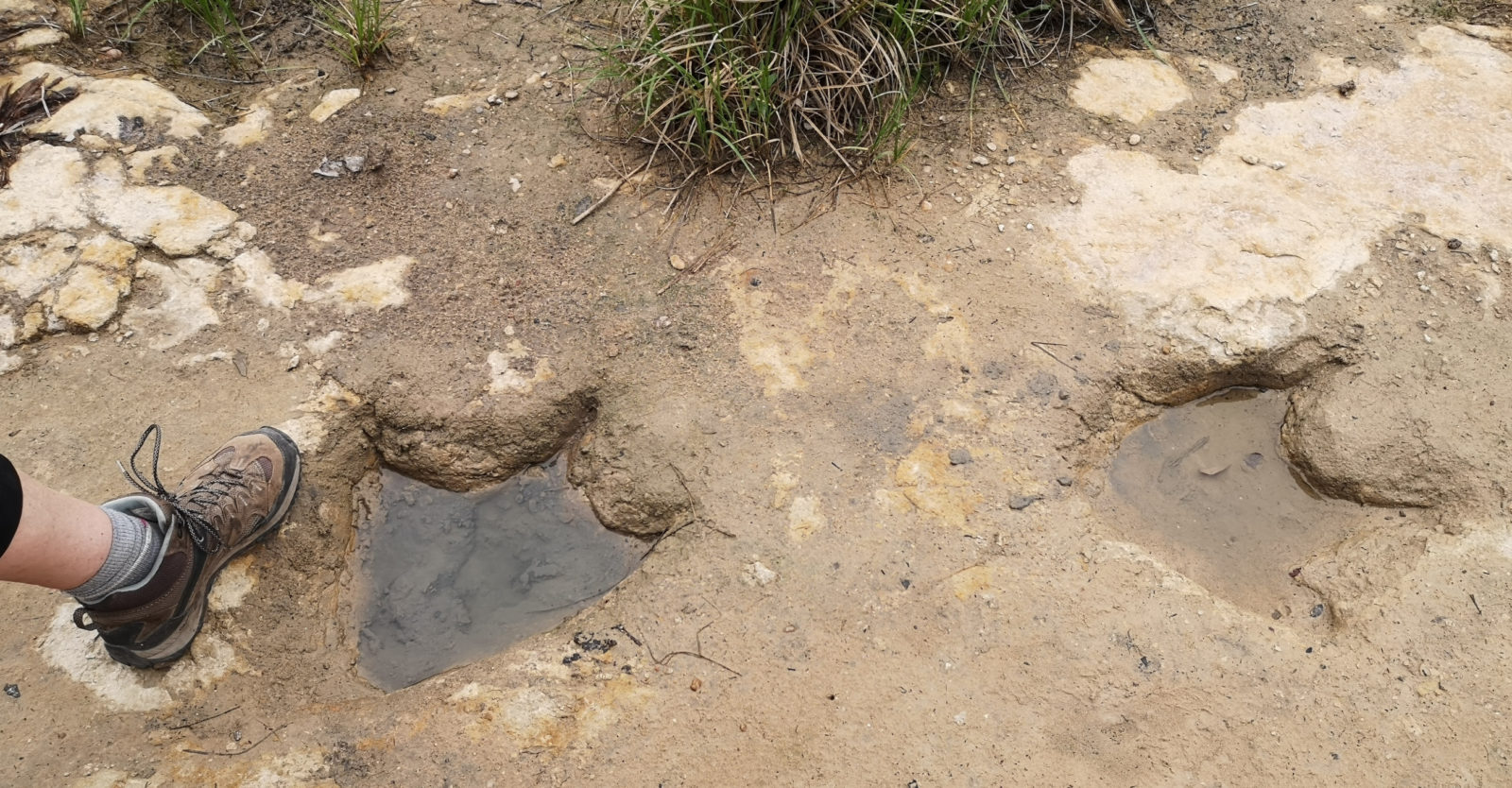
Cleburne State Park
After we got checked in at Cleburne State Park, we did a short walk on the Perch Point Fishing, Coyote Run, and Fossil Ridge trails, and we were amazed by the field of flowers by the water treatment plant.
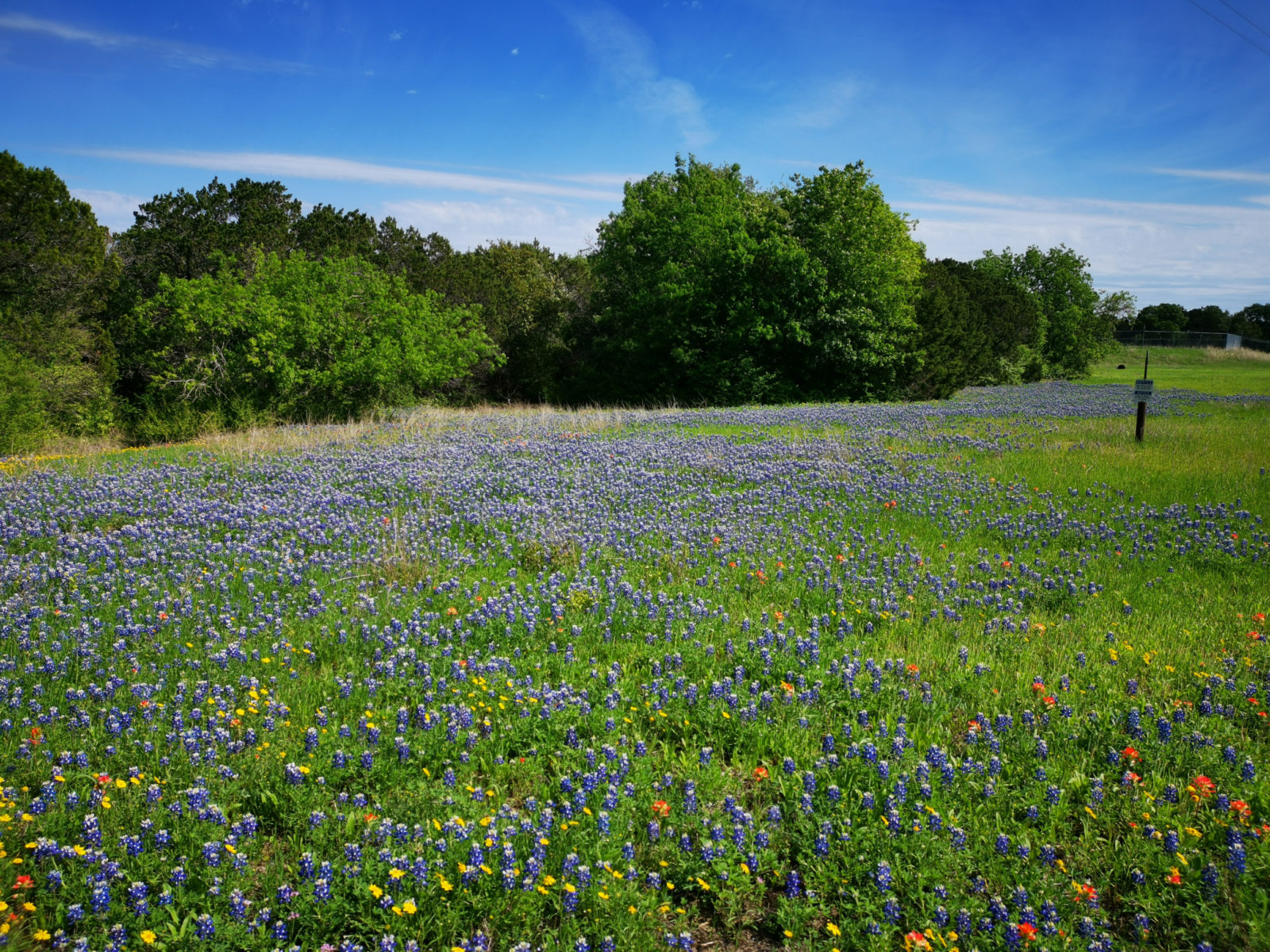
We decided to ride our mountain bikes on Coyote Run, Spillway, and Limestone Ridge Trails the following day. Coyote Run had some very steep rocky sections, but when we got to the Spillway trail, it was fascinating to see the 3-tiered limestone spillway built by the CCC.
Limestone Ridge was a trail built by DORBA (Dallas Offroad Bike Association), but it had a lot of poison ivy, so we cut the ride short and headed back on the main park road. We saw several very large Ammonite fossils along the trails, which was interesting.
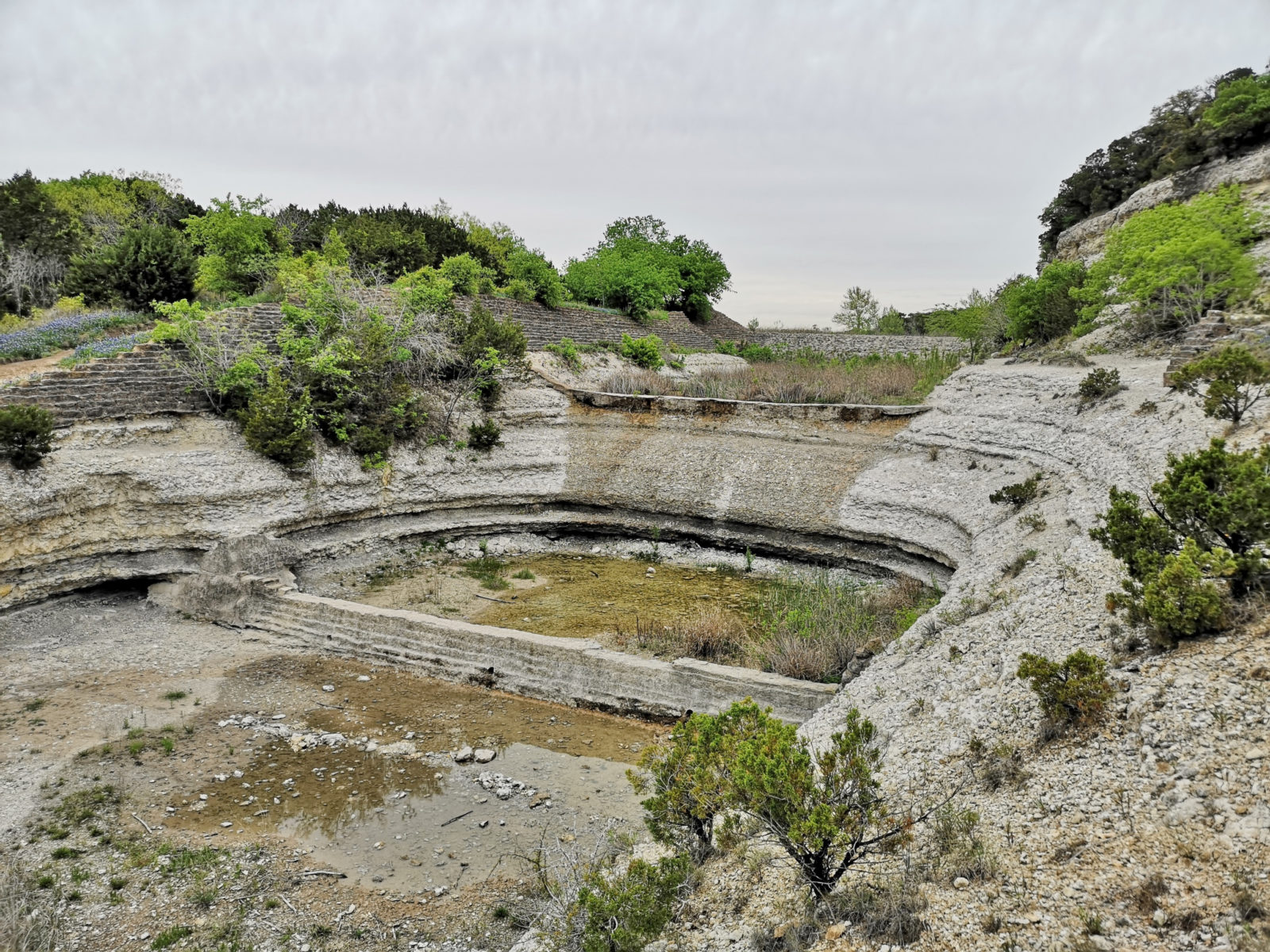
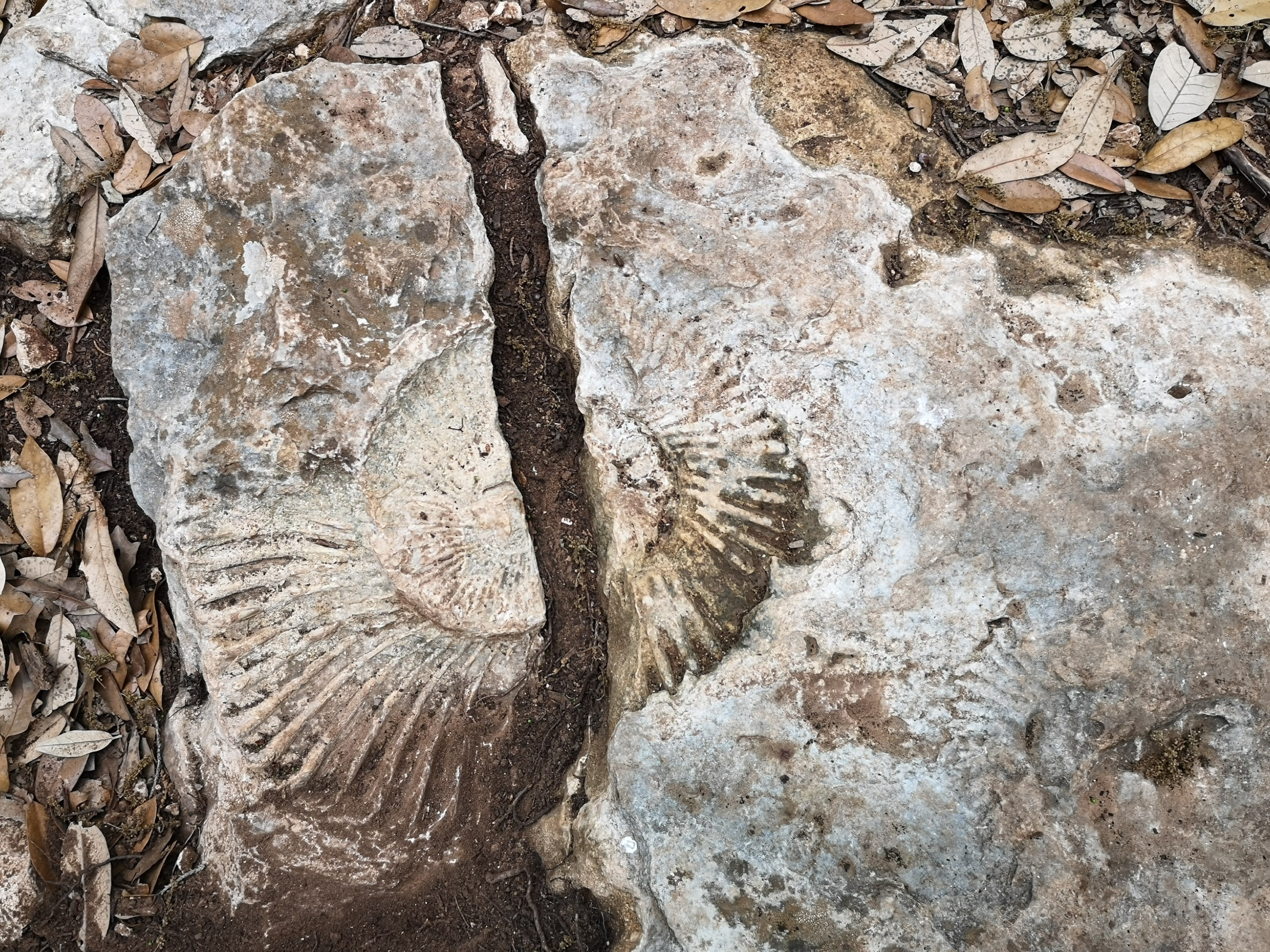
We have good friends who live in Plano, so we stopped in for a visit and also visited the Plano Mercedes Dealership to have some service work completed. We had an excellent experience with their service shop.
Lake Tawakoni State Park
The next stop was Lake Tawakoni State Park which was just over an hour from Plano. After we got to our site, we went for a 5 km hike on the Spring Point Trails and the White Deer Trail. The Honey Locust tree was unique, with massive thorns on the trunk.
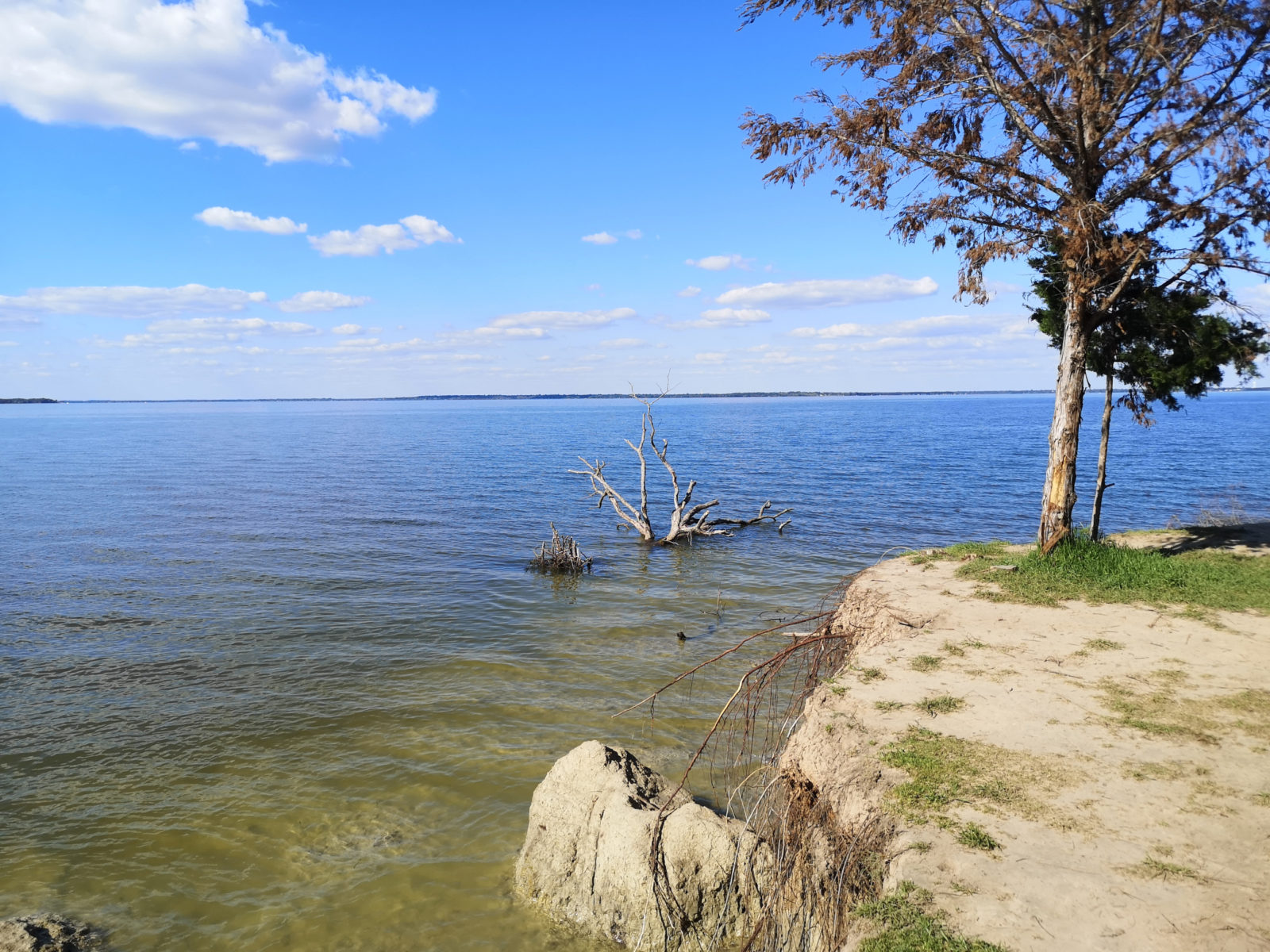
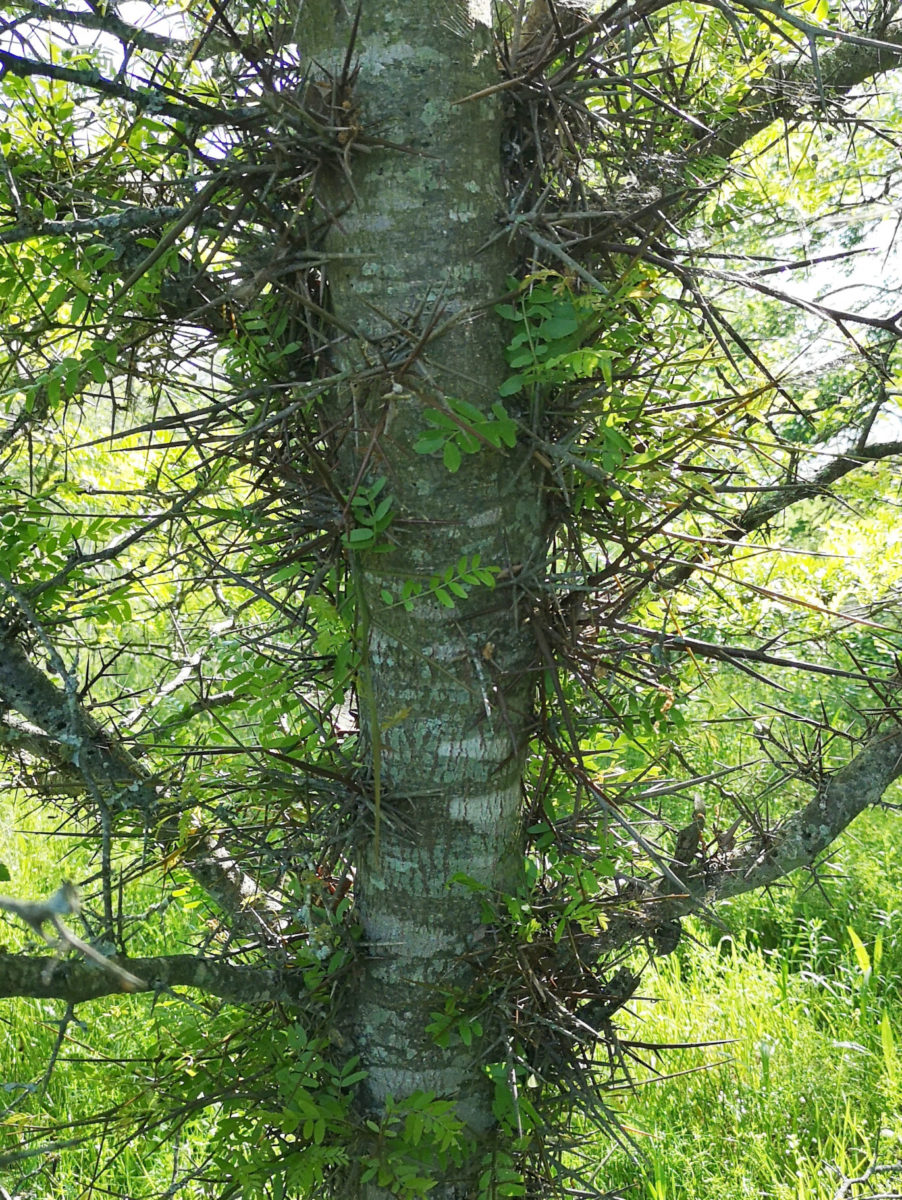
Also, a fascinating display board talked about a fly emergence in 2007 that, in turn, started a massive spider (Long Jawed Orb Weavers) invasion and web over the Spring Point Trail. The massive web setup attracted researchers to study the short-lived phenomenon. Luckily, we only saw a few webs on our hike.

The next morning before we left the park, we did another 5-kilometer hike on the Frackleberry, Red Oak, and Orange Osage Trails. On these trails, we saw a unique caterpillar, a Mayapple plant with some disease, a Virginia Spiderwort flower, and a very small snake. If we’d had more time, we would have finished the other loop trail or ridden our MTBs on these trails.
As we left the park and drove along the east side of the lake, there was a pretty spillway with lots of pelicans at the base.
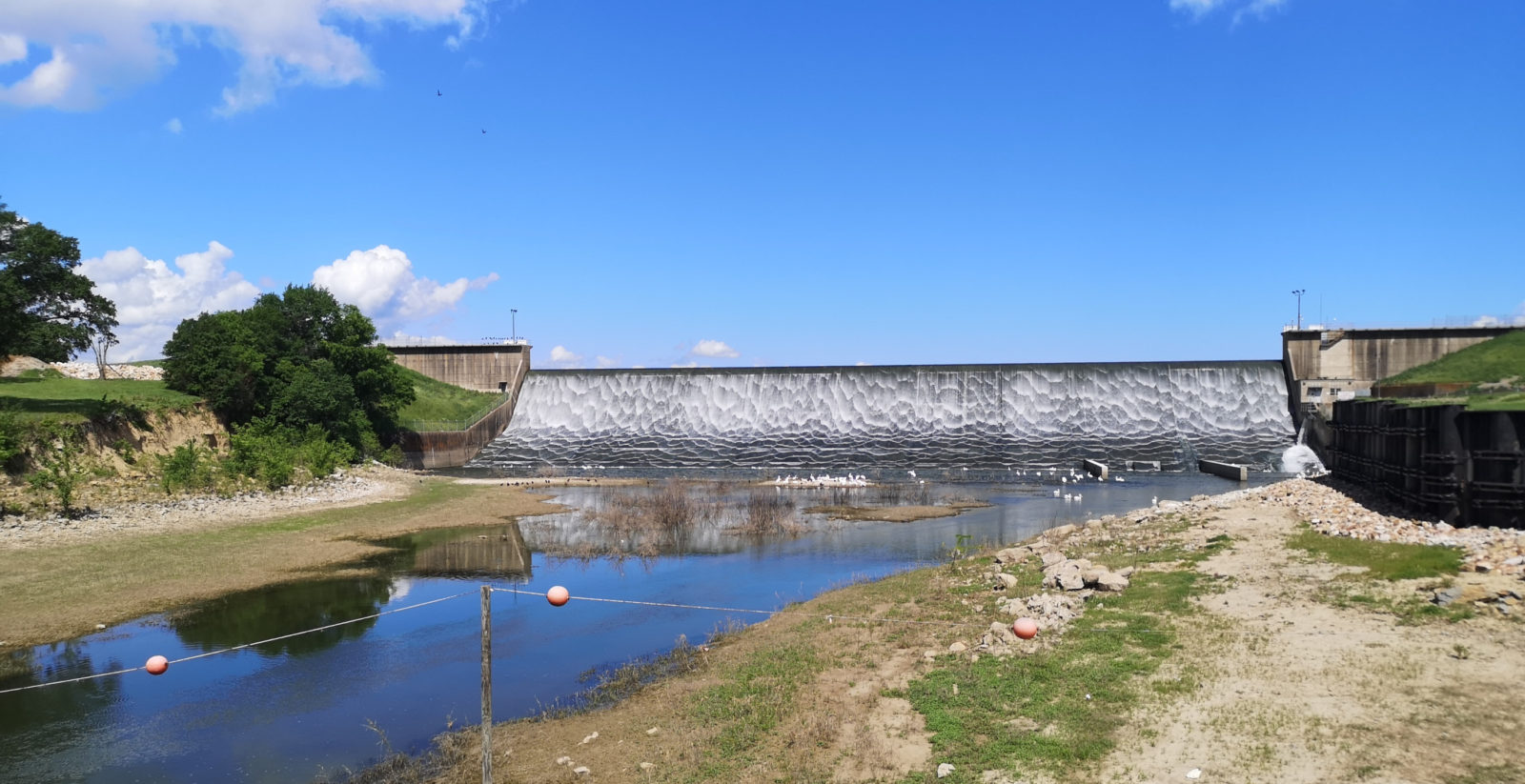
Caddo Lake State Park
Caddo Lake State Park is in the piney woods region of east Texas on Big Cypress Bayou. The area had an interesting history, including the assassination of the tax collector in 1840, as the residents didn’t want to pay taxes. Can you imagine that today? We only stayed one night at this park while trying to cover the distance on our way home. We had a self-imposed deadline to be home by April 26 so we could file our tax returns.
The next morning before leaving the park, we went down to the pier to see the bayou, but no alligators were around. Then we hiked all the trails to see the CCC-built buildings and returned on a different trail to see the flooded-out boat ramp and dock temporarily closed.
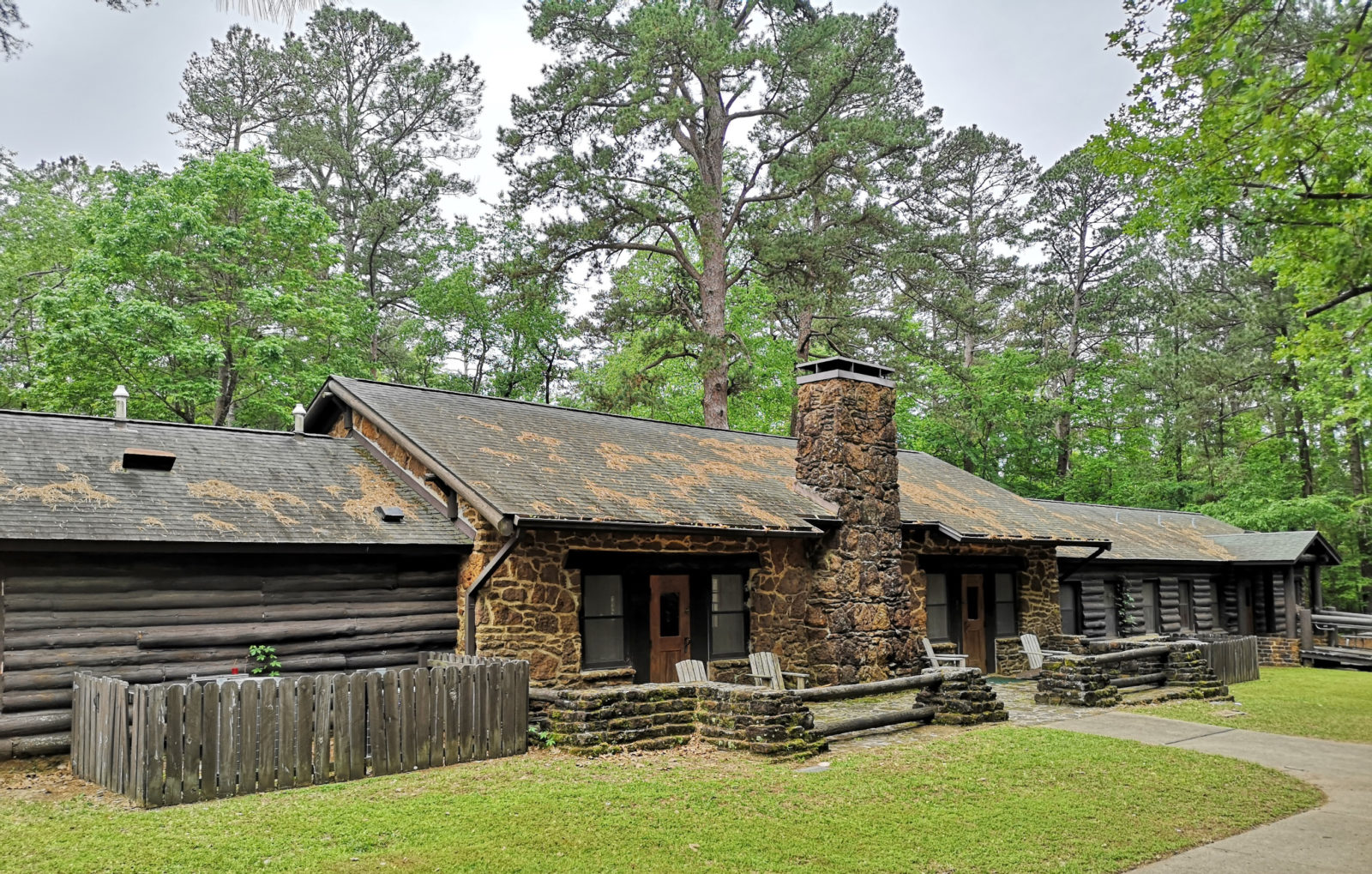
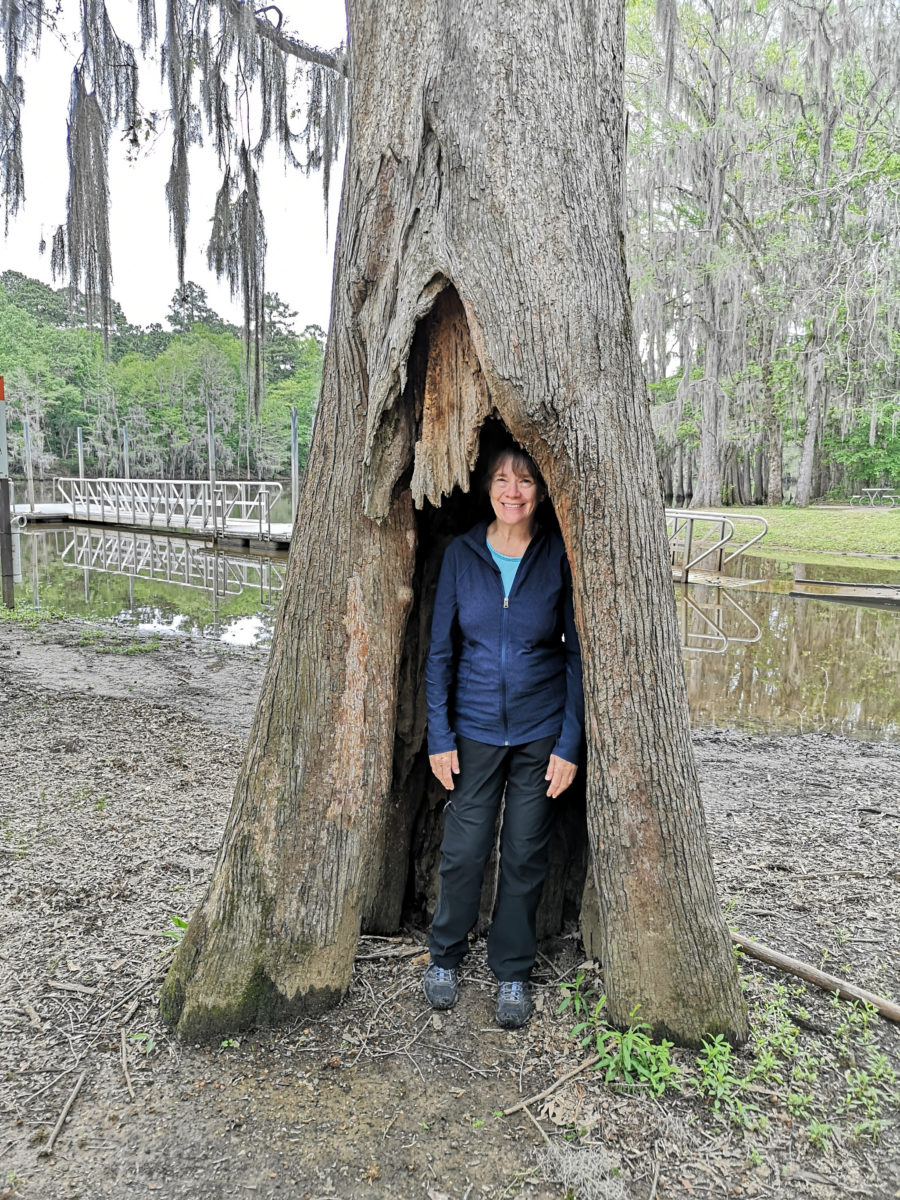
Atlanta State Park
Our last State Park in Texas was Atlanta State Park on Lake Wright Patman. The park had done a controlled burn a few days before, and at our end of the park, the trails were showing closed. Luckily, they opened the trailhead near us the next morning so that we could leave directly from the RV. We did a long 16-kilometer hiking day, including the White Oak Ridge, Hickory Hollow, Terrace, Volksmarch, Bobo’s Ferry, and Arrowhead trails. We could see and smell the burn area as we walked the White Oak Ridge trail, and there were even a few spots with smoke still rising.
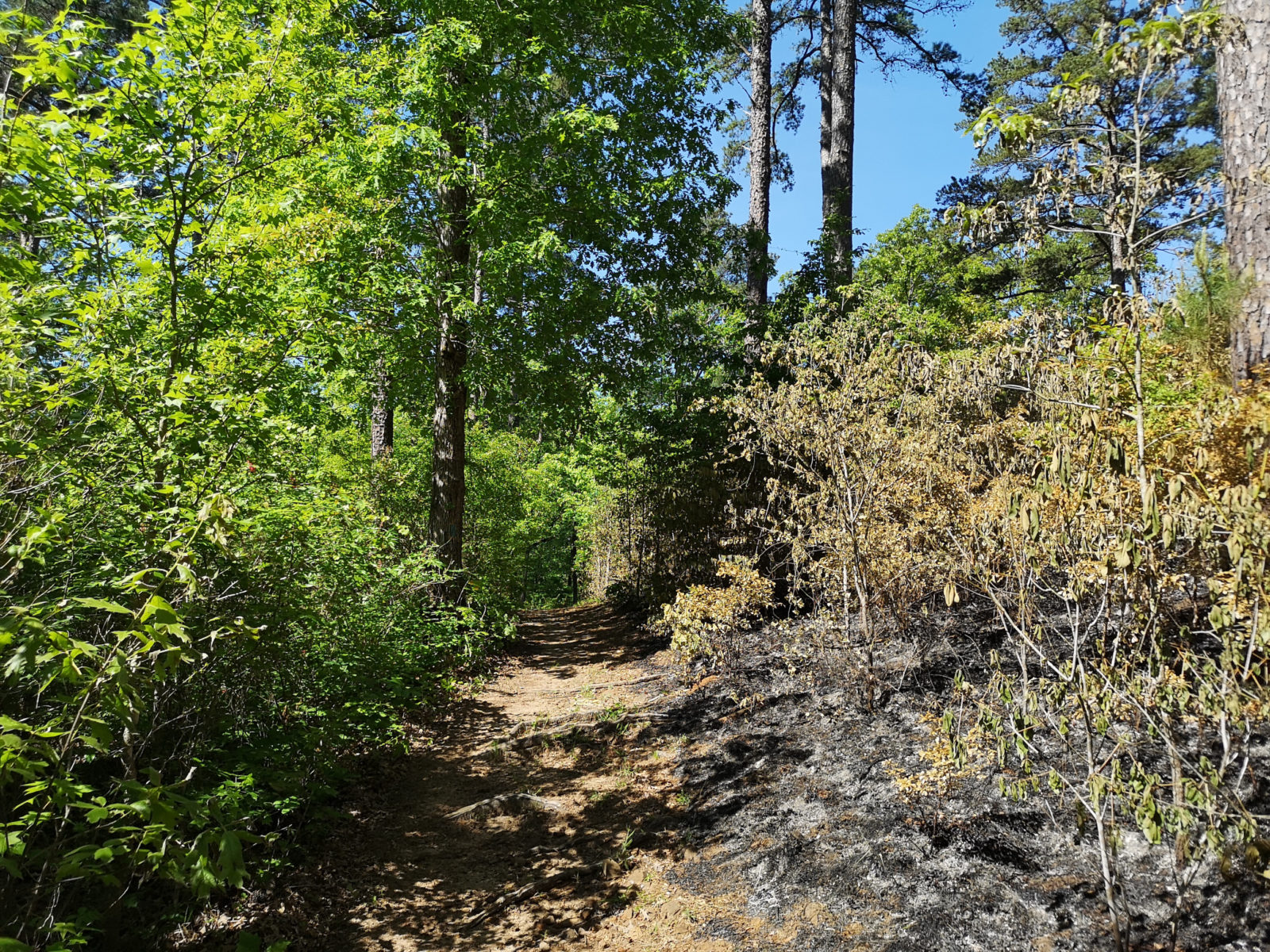
When we saw the name Terrace Trail, we imagined some rock/cliff terrace, but it just took you to an empty field where the lake had overflowed and killed the trees! After the Volksmarch trail, we reached the boat ramp at the far end of the park and had our lunch, and watched the school group of kids going for a swim in the lake. Bobo’s Ferry trail reminded us of the Natchez Trace, where you could see the wagon wheels had dug a trough along the path.
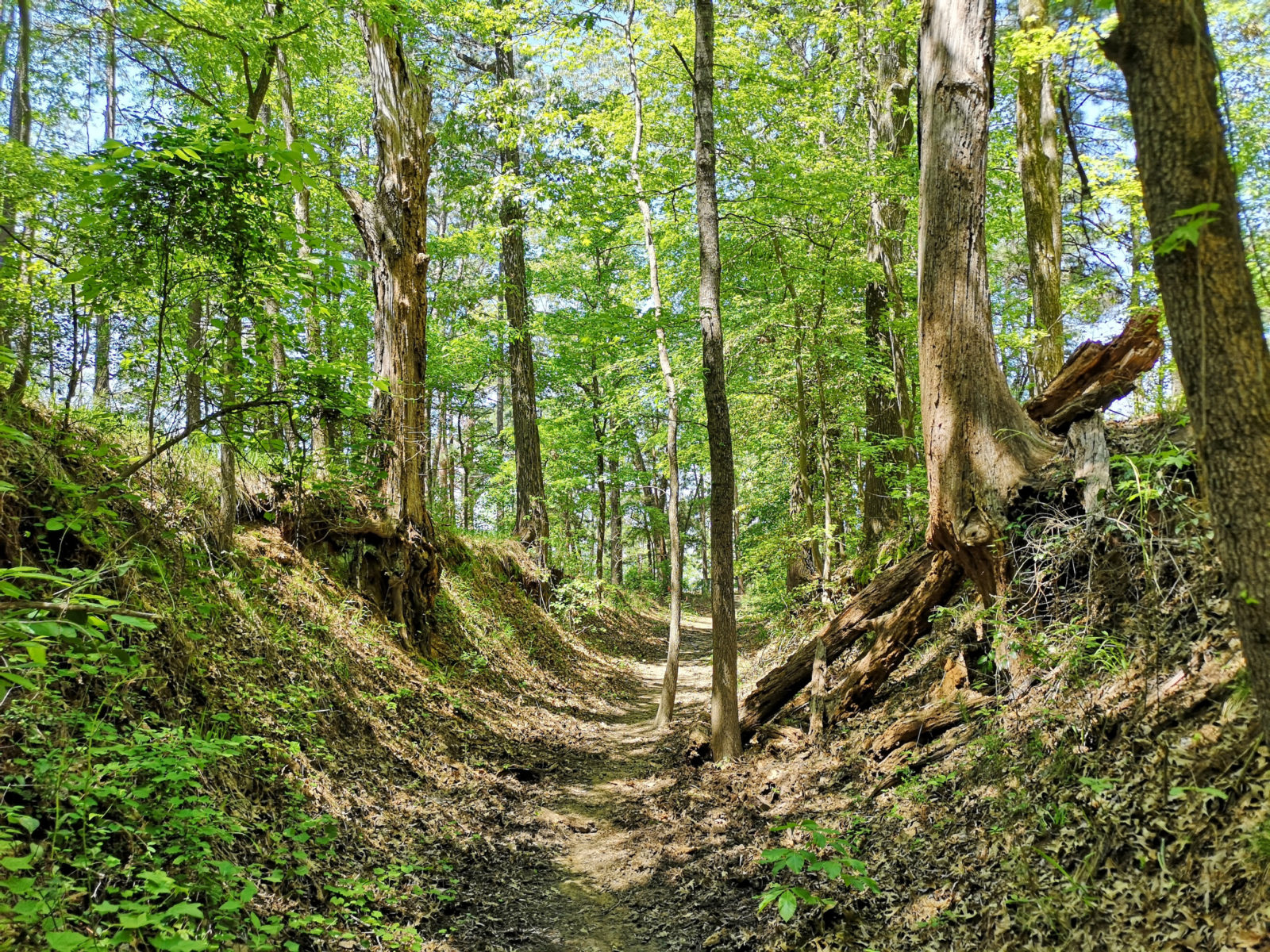
When we got back to the White Oak Ridge trail, we decided to take the side cut to the lakefront, and we’re really glad we did. The most spectacular scenery in the entire park was along the north edge of the lakefront, where none of the trails went!
There were interesting clay banks that reminded us of scuba diving in Colpoys Bay, Ontario, contrasting with the red banks of the soil. We were so glad that we ventured off the trail to see this area, even though it meant we had a long walk back on the road to get to the campground.
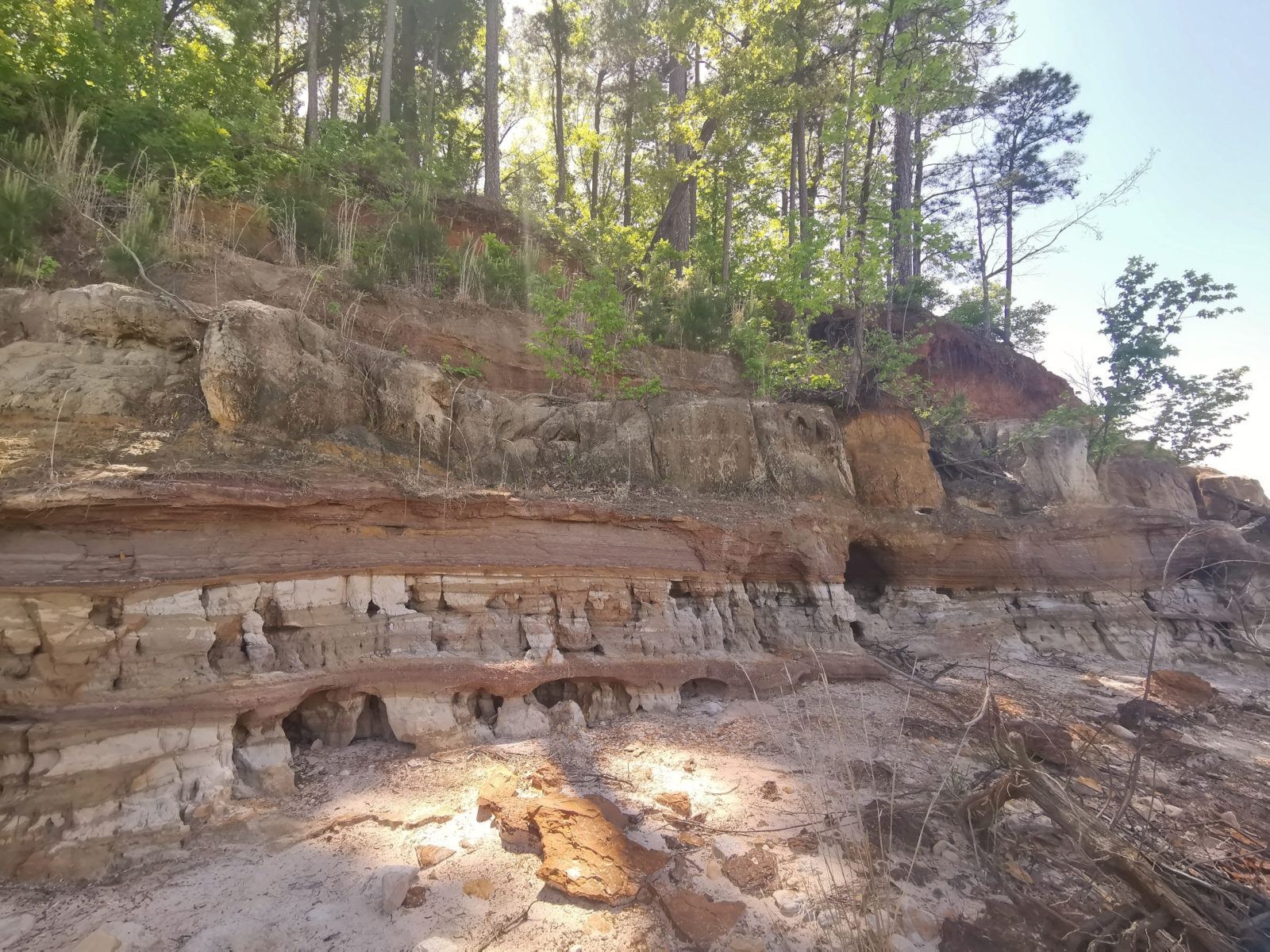
This concludes our Texas State Park adventure this year. We hope you’ve enjoyed this short glimpse of the parks we visited and will add Texas to your travel list with your LTV. We know we’ll return to try out other Texas State Parks and revisit our favorites.


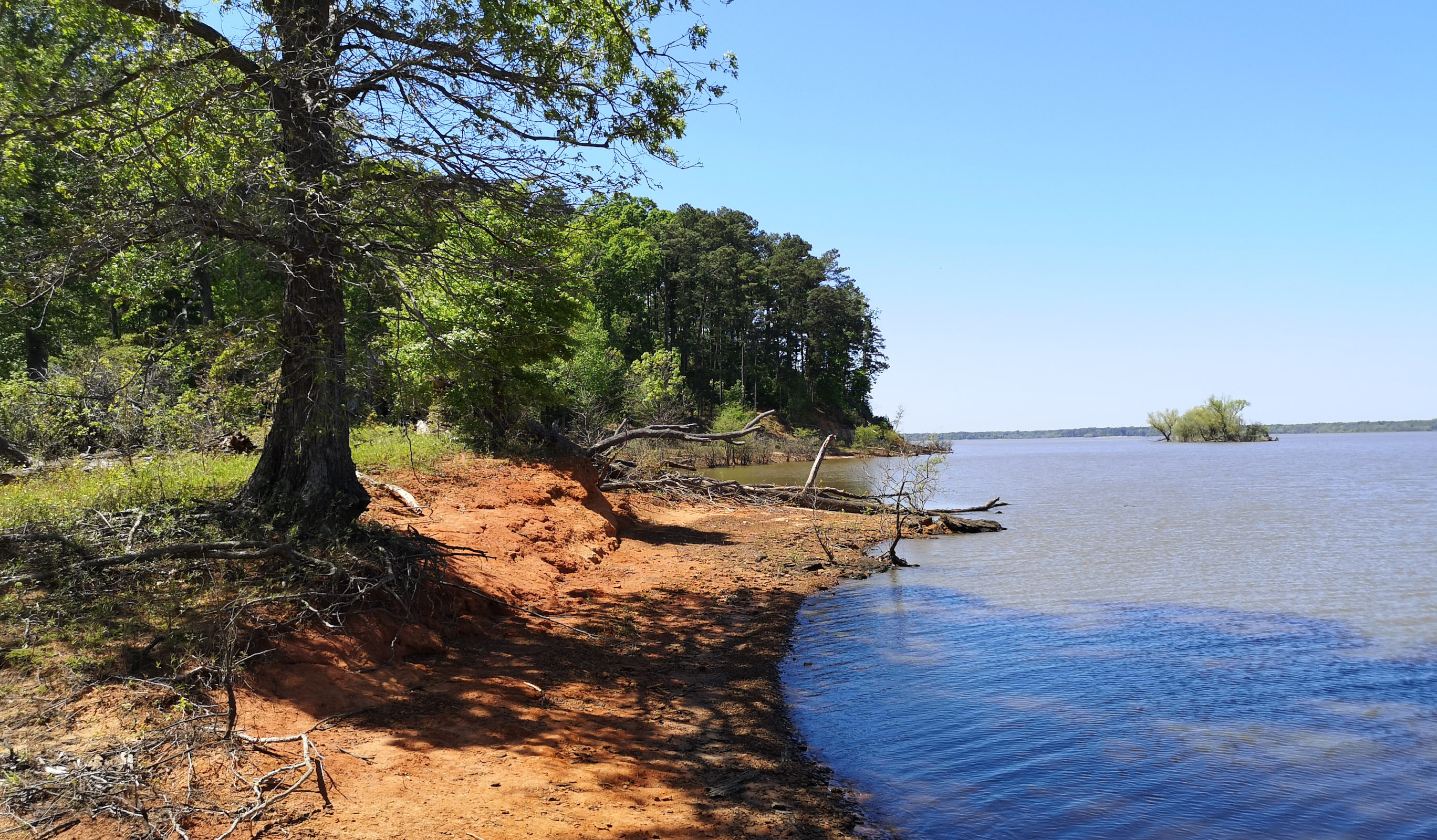
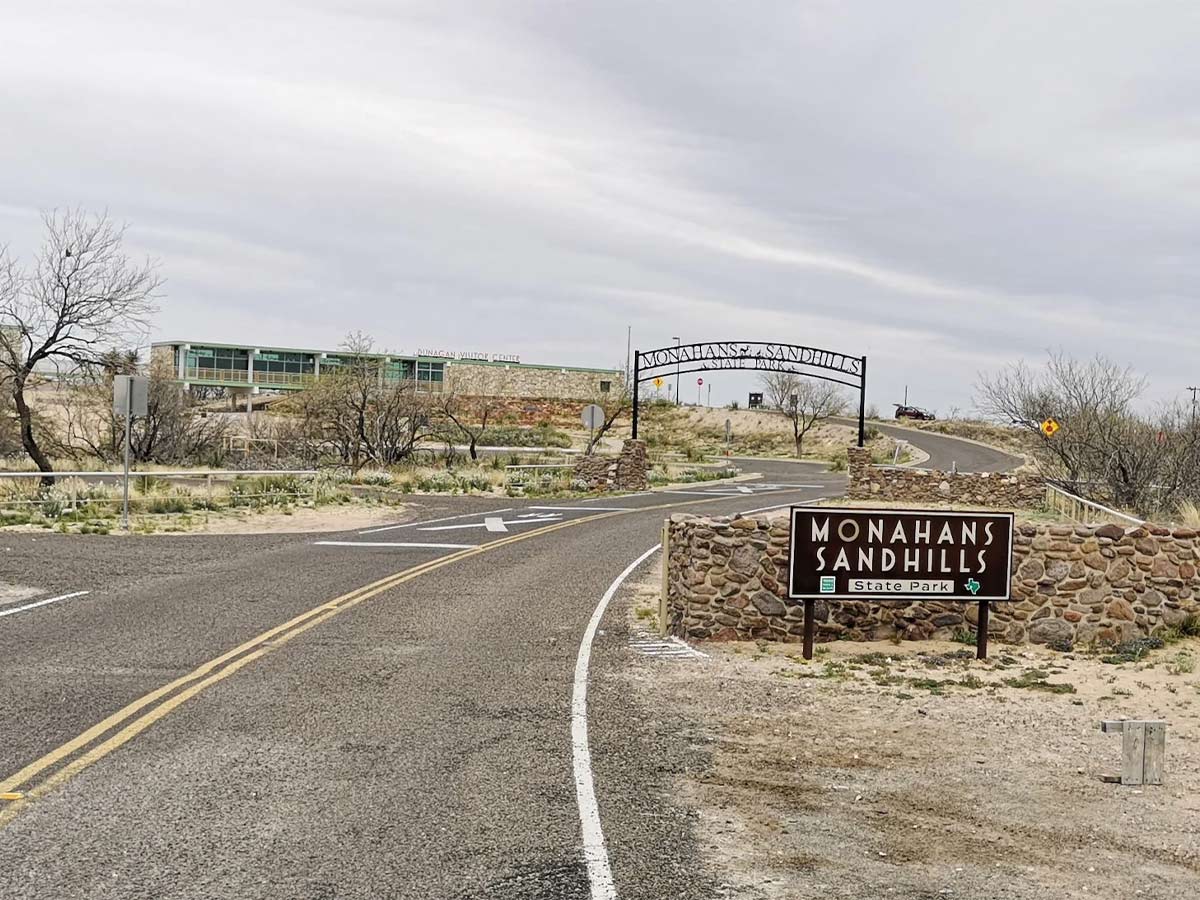
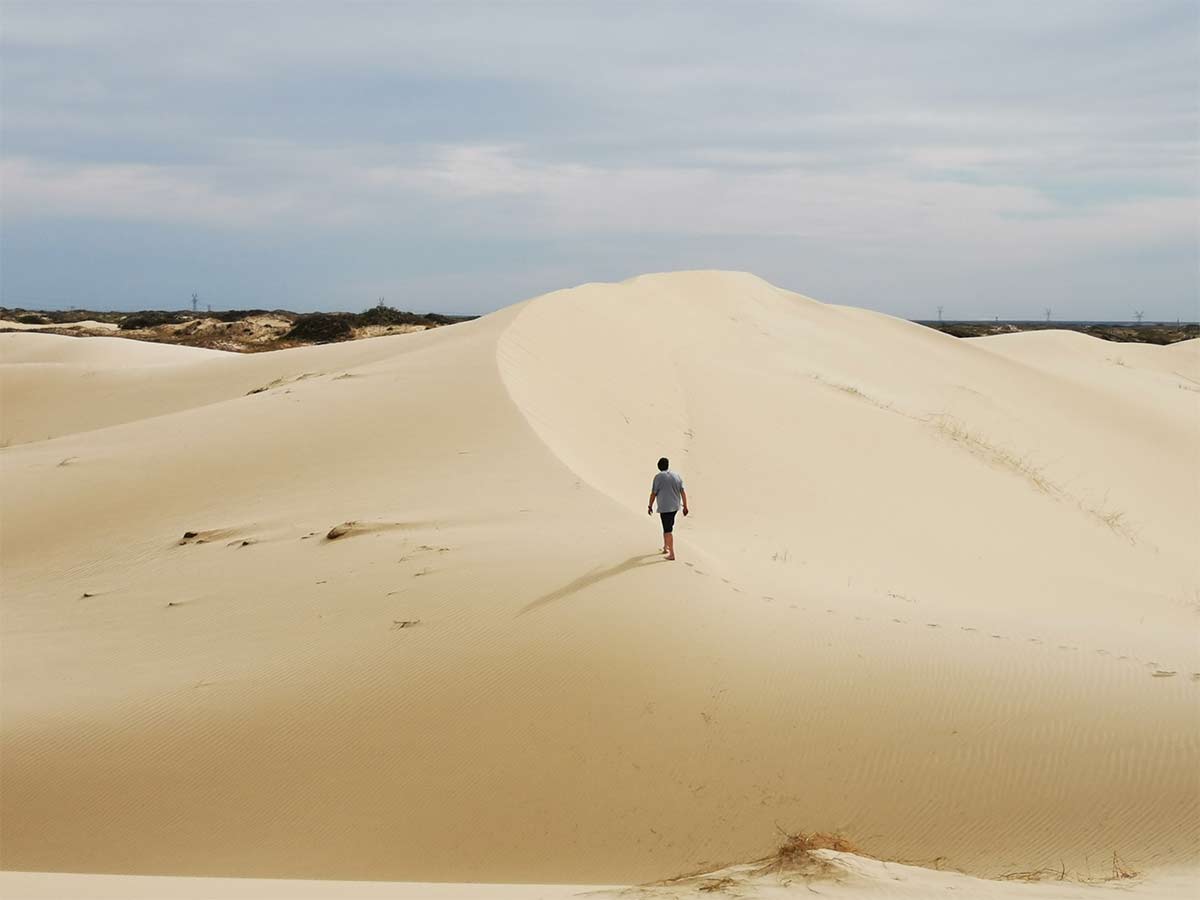
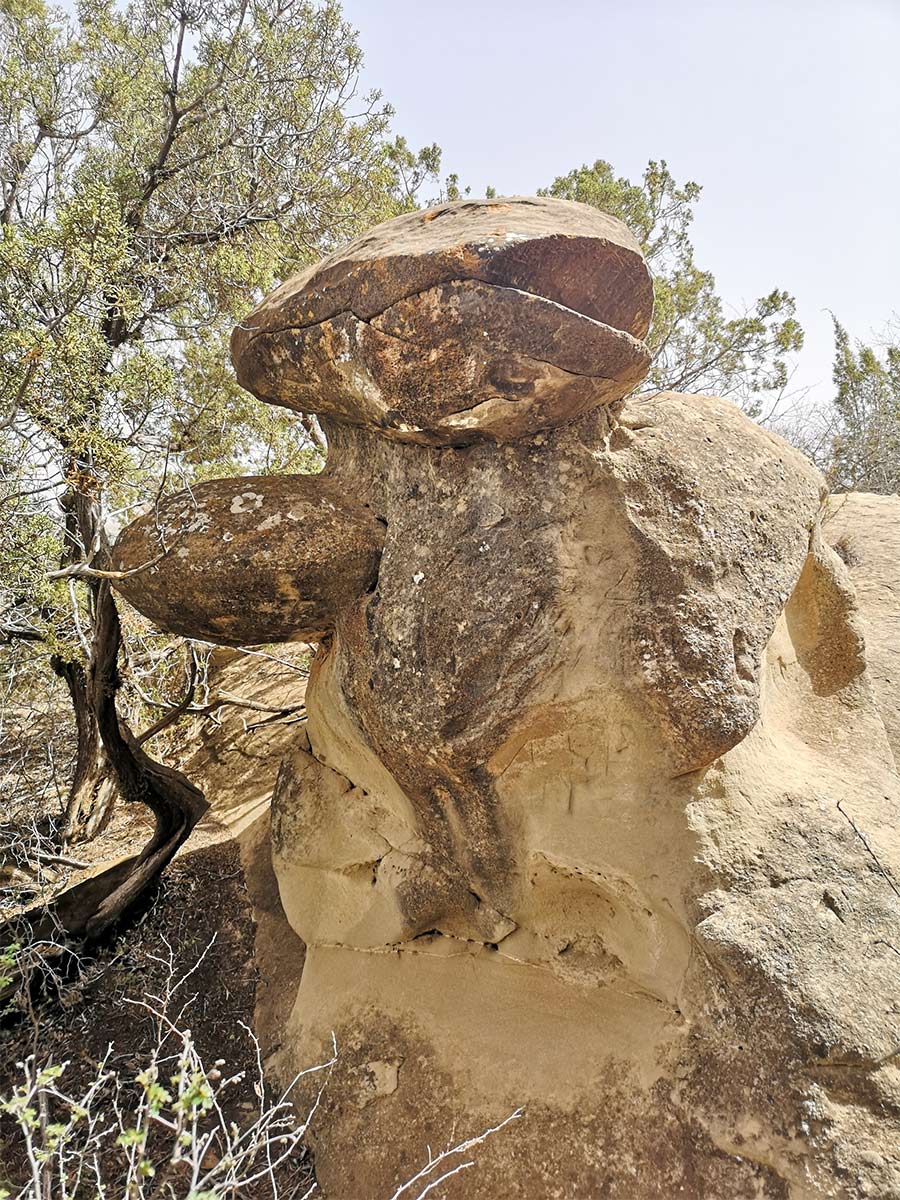
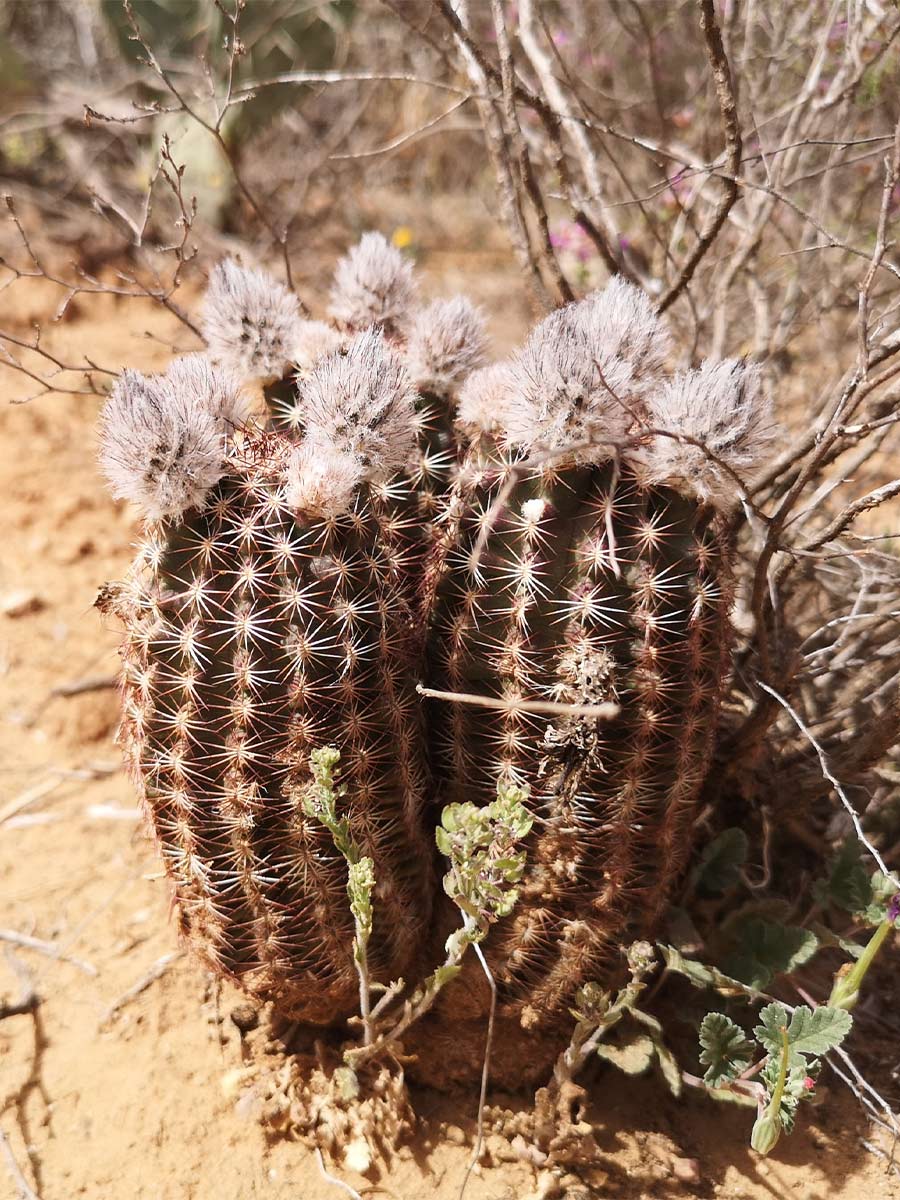















Comments